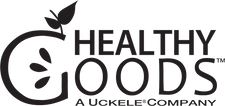Spring is springing, bringing with it the first bounties of the season at farmer's markets and roadside fruit and vegetable stands. If you live in or near a well-forested area however, you might be seeing a special treat pop up – the morel mushroom. Prized in French cuisine for centuries, there are many species of this honeycombed mushroom in the United States, and you don't have to shell out big bucks to get them – all you need is the right location, a little know-how, and a good pair of eyes, and you can turn a fun day hike into a culinary adventure.
One of my co-workers, April, is an experienced morel hunter. Here in Oregon, morels can be found pretty much statewide, but especially on the eastern side of the state, with its copious ponderosa and lodgepole pine forests. According to April, the best places to find morels are generally around dead or dying fir trees or recently burned areas, as those are their favorite growing areas – but sometimes, you'll find them in your own backyard. Two years after a forest fire is supposed to be the prime growing time for morels.
(If you're looking for specific advice on where to go to find morels, there I can't help you – prime morel hunting spots are closely guarded secrets and shared begrudgingly at best.)
When looking for morels, April advises, go slow and keep your eyes to the ground, as morels will frequently have the same color as the ground they grow out of, so if they're in a blackened burn, they'll appear black, and if they're coming up through blonde duff, they'll look straw-colored. They can be harvested by hand, but should not just be pulled out of the ground, rather, use a knife to cut the mushroom off at the base.
There is no best time of day per se to look for morels, but it helps to go over the same ground multiple times, as different light can help expose mushrooms that were missed the first time around. And if you find one, keep looking, as they seldom grow singly.
Once harvested, morels should be soaked in water to eliminate any dirt and small bugs. Plain water works well, but you can use salted water as well, just don't soak them as long. Once they're clean, they can be dried off and will keep for up to a week in the refrigerator, but if you can wait that long to eat them, well, you're a better man than I.
Do note that you shouldn't eat raw morels; they contain trace amounts of hydrazines, which are mildly toxic. Cooking removes these toxins and makes them safe to eat.
If you strike out hunting mushrooms, all is not lost: morels can be found frequently at roadside markets in prime morel territories for less-than-exorbitant prices, or at certain upscale supermarkets. If nothing else, you got outside, got some exercise, and hopefully got to explore a corner of the world you hadn't seen before.
If you want to save your morels for later, they are a prime candidate for dehydrating. April uses an Excalibur 9-Tray Dehydrator for her dehydrating purposes. For morels, slice them in half, then set them in the dehydrator for six hours at 114 degrees. Dehydrated and vacuum sealed, morels will last pretty much indefinitely, and can be easily rehydrated in about fifteen minutes in a bowl of warm water.
Any species of edible mushroom is ideal for dehydrating, including shiitakes, criminis, and portobellos. Like morels, vacuum sealed mushrooms will last pretty much forever.
Come back in a couple of days and we'll share a recipe from April that incorporates morels with another rare springtime treat, the fiddlehead fern, in a unique, tasty, and gluten-free recipe.
Dave Meddish, Live Superfoods
WARNING: Some mushrooms are toxic. If you are new to mushroom hunting, join a local mushroom hunting club to go on live forays with knowledgeable mycologists who can correctly identify mushrooms. Do not attempt to eat wild mushrooms unless you are willing to take responsibility for your actions. Live Superfoods is not responsible for any decision made by readers of this website.

